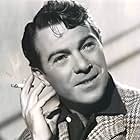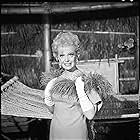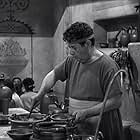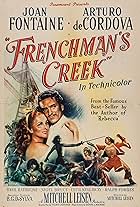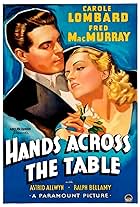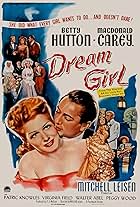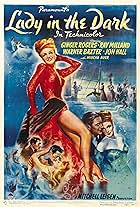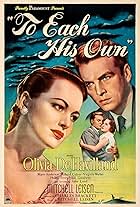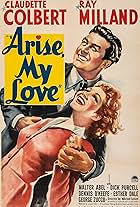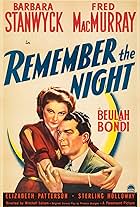An American singer stranded in Mexico is hired by a banker to distract a Mexican matador who is making a play for the banker's wife. They hatch a scheme whereby she pretends to be a Spanish ... Read allAn American singer stranded in Mexico is hired by a banker to distract a Mexican matador who is making a play for the banker's wife. They hatch a scheme whereby she pretends to be a Spanish countess.An American singer stranded in Mexico is hired by a banker to distract a Mexican matador who is making a play for the banker's wife. They hatch a scheme whereby she pretends to be a Spanish countess.
Jorge Rigaud
- Boris Cassall
- (as George Rigaud)
Jean Acker
- Party Guest
- (uncredited)
Enrique Acosta
- Bullfight Spectator
- (uncredited)
George Anderson
- Customs Official
- (uncredited)
Sam Appel
- Man at Airport
- (uncredited)
Gordon Arnold
- Party Guest
- (uncredited)
Paulita Arvizu
- Bullfight Spectator
- (uncredited)
Don Avalier
- Headwaiter
- (uncredited)
Albert Baldo
- Bullfight Spectator
- (uncredited)
- Director
- Writers
- All cast & crew
- Production, box office & more at IMDbPro
Storyline
Did you know
- TriviaOne of over 700 Paramount Productions, filmed between 1929 and 1949, which were sold to MCA/Universal in 1958 for television distribution, and have been owned and controlled by Universal ever since; its earliest documented telecast took place in Omaha Wednesday 6 May 1959 on KETV (Channel 7); it first aired in Seattle Thursday 12 November 1959 on KIRO (Channel 7).
- ConnectionsRemake of Midnight (1939)
- SoundtracksPerfidia
(uncredited)
Written by Alberto Domínguez
English Lyrics by Milton Leeds
Performed by Dorothy Lamour
Featured review
Masquerade in Mexico was a musical remake of the classic comedy Midnight starring Claudette Colbert. It was made just six years after the original film and starred Paramount's other brunette superstar, Dorothy Lamour. Paramount needed a new film for Dorothy and director Mitchell Leisen, who had future plans for a musical adaptation of his original, decided to go ahead and work up a rush job for the project. The end result is a pleasant though unexceptional film most notable for Dorothy Lamour at perhaps her loveliest in glamorous and elegant costumes by Edith Head.
The story has been changed a fair bit from the original but fans of the first film will easily recognize it's origins. Lamour flies into Mexico to meet her fiancée only to learn the guy is a con artist and thief and finds he has hidden a stolen diamond in her baggage. Seeing the police at the airport searching the travelers she (not too upright herself) drops the diamond in the jacket pocket of another traveler, Patric Knowles, and scoots away but she is penniless in a foreign country. A friendly cab driver (Mikhail Rasumny) takes her around to audition to at the nightclubs, first as a dancer, then as a singer and finally, she is hired. Alas, her first night on the job she is spotted by patron Knowles, who is attending the nightclub with his soon-to-be ex-wife Ann Dvorak and her lover, bullfighting legend Arturo De Cordova. Seeing how bewitched De Cordova is with the American beauty, Knowles, knowing Lamour was the one who hid the diamond on him, decides to blackmail her into vamping De Cordova to get him out of the way and win his wife back.
As mentioned, Dorothy Lamour is beyond beautiful in this picture and does very well as the cynical Cinderella. The emphasis here is on romance and music rather than comedy like the original; Lamour's character is not the sharp-witted handful of a coquette Colbert was in the first film. Patric Knowles' part is a combination of the John Barrymore and Don Ameche roles, while De Cordova has the Francis Lederer part which is beefed up considerably here. DeCordova was a major star in Mexican films and Paramount briefly tried breaking him into American films; in a year or two he was back on his home base and his old success.
Knowles is no Barrymore when it comes to comedy (the bogus sick child phone call notably does not pack the punch of the original) but then his role here is not really written as comic; as the new Ameche, however, he is more of a dashing gentleman and makes the ultimate romantic connection seem more credible than perhaps in the original where Claudette was virtually harassed in to giving in to Ameche's designs. Ann Dvorak's role as the cheating wife is much the same as Mary Astor's but Dvorak gives a better performance, not bothering with the sugary insincerity that Astor played. The biggest change from the original was transforming the brazenly gay, drama-loving Astor confidant played by Rex O'Malley into an equally gossipy socialite buddy for Dvorak played by Natalie Schafer but alas without the good lines from the original.
While this movie really should have been in Technicolor, it's glamourous Mexican settings work very well in stylishly photographed black-and-white. Lamour's singing is wonderful and she dances surprisingly well for someone who rarely did so in pictures. One mistake is an extended amateur (though lavish) opera Dvorak throws for her friends at her home; the segment is dull and ends rather abruptly as if Leisen realized it wasn't working and just stopped it, keeping the footage already shot. Masquerade in Mexico doesn't have the bubbly perfection Midnight's champagne, but it's a perfectly acceptable evening cocktail. Both films seem an ideal candidate for a restored, double-feature release for Criterion if Universal ever decides to let the original slip out of print on dvd.
The story has been changed a fair bit from the original but fans of the first film will easily recognize it's origins. Lamour flies into Mexico to meet her fiancée only to learn the guy is a con artist and thief and finds he has hidden a stolen diamond in her baggage. Seeing the police at the airport searching the travelers she (not too upright herself) drops the diamond in the jacket pocket of another traveler, Patric Knowles, and scoots away but she is penniless in a foreign country. A friendly cab driver (Mikhail Rasumny) takes her around to audition to at the nightclubs, first as a dancer, then as a singer and finally, she is hired. Alas, her first night on the job she is spotted by patron Knowles, who is attending the nightclub with his soon-to-be ex-wife Ann Dvorak and her lover, bullfighting legend Arturo De Cordova. Seeing how bewitched De Cordova is with the American beauty, Knowles, knowing Lamour was the one who hid the diamond on him, decides to blackmail her into vamping De Cordova to get him out of the way and win his wife back.
As mentioned, Dorothy Lamour is beyond beautiful in this picture and does very well as the cynical Cinderella. The emphasis here is on romance and music rather than comedy like the original; Lamour's character is not the sharp-witted handful of a coquette Colbert was in the first film. Patric Knowles' part is a combination of the John Barrymore and Don Ameche roles, while De Cordova has the Francis Lederer part which is beefed up considerably here. DeCordova was a major star in Mexican films and Paramount briefly tried breaking him into American films; in a year or two he was back on his home base and his old success.
Knowles is no Barrymore when it comes to comedy (the bogus sick child phone call notably does not pack the punch of the original) but then his role here is not really written as comic; as the new Ameche, however, he is more of a dashing gentleman and makes the ultimate romantic connection seem more credible than perhaps in the original where Claudette was virtually harassed in to giving in to Ameche's designs. Ann Dvorak's role as the cheating wife is much the same as Mary Astor's but Dvorak gives a better performance, not bothering with the sugary insincerity that Astor played. The biggest change from the original was transforming the brazenly gay, drama-loving Astor confidant played by Rex O'Malley into an equally gossipy socialite buddy for Dvorak played by Natalie Schafer but alas without the good lines from the original.
While this movie really should have been in Technicolor, it's glamourous Mexican settings work very well in stylishly photographed black-and-white. Lamour's singing is wonderful and she dances surprisingly well for someone who rarely did so in pictures. One mistake is an extended amateur (though lavish) opera Dvorak throws for her friends at her home; the segment is dull and ends rather abruptly as if Leisen realized it wasn't working and just stopped it, keeping the footage already shot. Masquerade in Mexico doesn't have the bubbly perfection Midnight's champagne, but it's a perfectly acceptable evening cocktail. Both films seem an ideal candidate for a restored, double-feature release for Criterion if Universal ever decides to let the original slip out of print on dvd.
Details
- Release date
- Country of origin
- Languages
- Also known as
- Maskerad i Mexico
- Filming locations
- Production company
- See more company credits at IMDbPro
- Runtime1 hour 36 minutes
- Color
- Aspect ratio
- 1.37 : 1
Contribute to this page
Suggest an edit or add missing content










